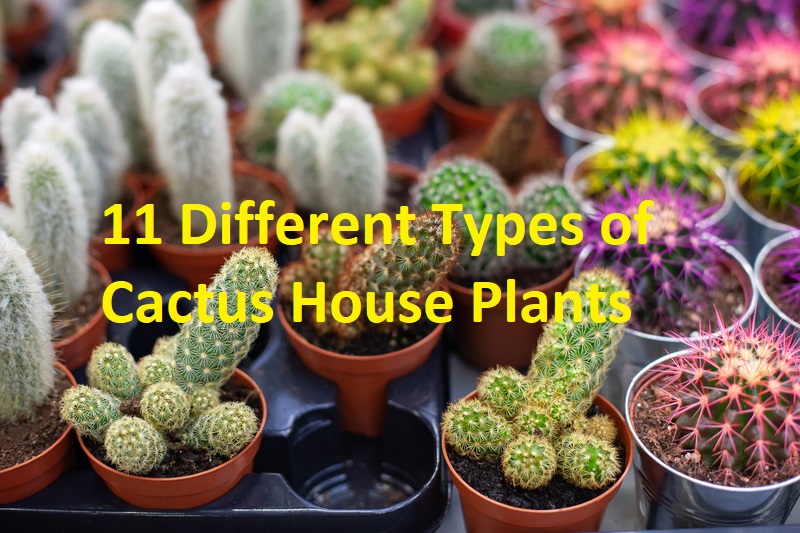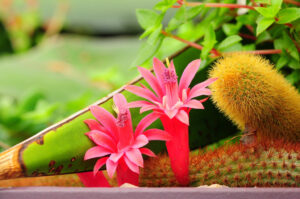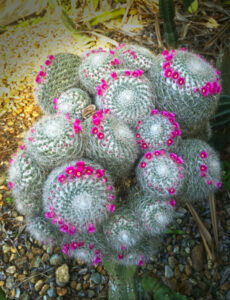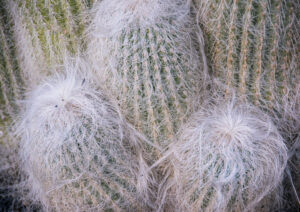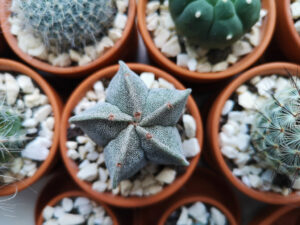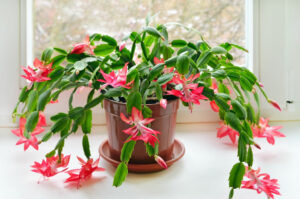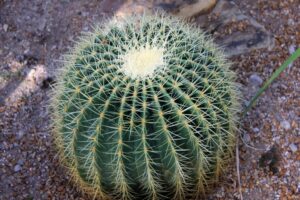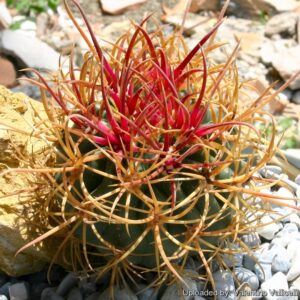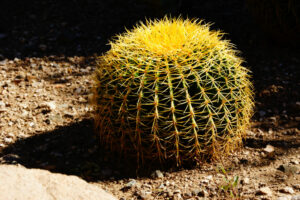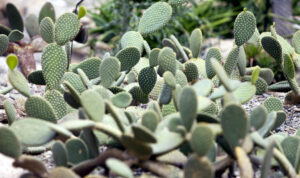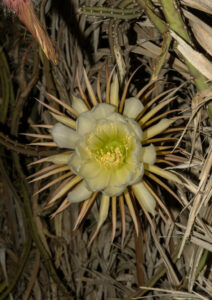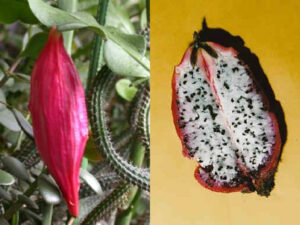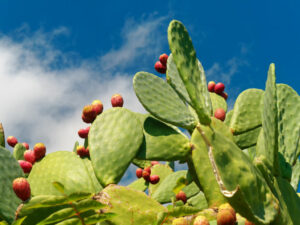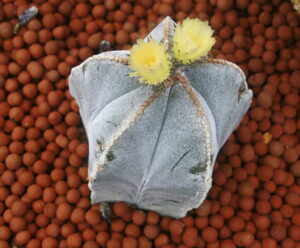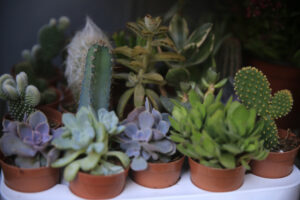HousePlantJoy is supported by our audience. When you purchase through one of our links, we may earn a small affiliate commission. As an Amazon Associate I earn from qualifying purchases. Your cost is not affected.
==================
11 Best Types of Cactus House Plants
All cacti are green and spiky. There are wide varieties of cactus houseplants to pick from, with over 1700 varieties. Some are green and feature sharp spikes. Besides the traditional green, many incorporate various hues. Too many choices, but what are your best types of cactus house plants? Let me give you some ideas.
There are wide varieties of cacti. Choosing the perfect cactus for you may be hard, but there are many to choose from! Many people are passionate about plants.
Cactus can generate flowering buds. Let’s enjoy its floral and lush green plants. These indoor cactus plants will give you a variety of enjoyment! I will show you 11 different kinds of cactus house plants and other information about them that you can consider. Let’s go!
Types of Cactus House Plants
1. Rat tail cactus
Rat tail cacti are named for their long, trailing stems that grow to about 4 feet tall when they are grown. It is one popular houseplant cactus in the United States. The rat tail desert flowering cactus indoor plant blooms at the end of spring and the beginning of summer.
The plant’s blossoms are only pink or orange a few times. The majority of the time, though, they are violet-red. Because of the color it offers to people’s homes. It has become one of the best indoor cactus plants. The flowers are spherical and large, measuring around 2 inches in diameter. This plant produces many blossoms in the spring, but each one only lasts a few days before dying. Take advantage of the blooming flowers by taking pictures with your camera!
The original plant has stems with smooth edges, but we also see rat tail cactus with furrowed stems. Cuttings of this plant are a simple and effective method of propagation. Because its stems grow, you may be able to spare some for whoever wants to have it too. The stems are attractive, but their sharp spikes need care while handling.
Different types of rat tail cactus
Were you aware that there are three major types of rat tail cactus? Here are a few on the list.
-
Disocactus Flagelliformis
It’s a creeping or epiphytic cactus with many branches at the base that has been grown as a houseplant for more than 300 years. The rat tail is a free-flowering plant with long, thin stems that hold many crimson-pink flowers. It works well as a hanging plant. Putting a big plant in a pot may look like a waterfall is pouring out of the top, making it even more impressive. It is even easy to grow among the various species of rat tail.
-
Cylindropuntia Leptocaulis
Cylindropuntia leptocaulis are thin, with spiky or spineless stems. They are usually compact and grow up to 4 to 6 meters in height. And can sometimes look like trees, but their trunks are usually shorter than their stems. But change it into a kind of cactus inside the house if you want is applicable. The stems are usually thinner than a pencil and have a dark purple stripe spanning the length. It is one of the best indoor cactus plants because it is easy to care for and looks different.
-
Cleistocactus Winteri (Golden Rat Tail)
Cleistocactus Winteri, or Golden rat tail, looks wild and unusual. It’s an easy-to-grow cactus that will look great in your collection of different kinds of cactus house plants. Cacti like this are ideal for gardeners with little time or experience or new to gardening. Cleistocactus Winteri may be grown inside or out and thrive in any location. Choosing to grow this cactus houseplant in a hanging basket is popular among many people. In warm enough climates, you can grow it in the garden, so there is no need to do that.
2. African milk tree
Euphorbia trigona, is a succulent but used as a modest indoor cactus plant. Thrives well, even in a little space. Cathedral plants are cactus plants that, in the right conditions, can grow to be more than eight feet tall. When used as a houseplant cactus, it seldom grows above four feet. The wrinkled stems of thistles produce tiny green leaves between the thistles. Rose-purple leaves adorn one form of the Rubra. If you take good care of something, you can make it last a long time, as cactus in house.
African milk tree problems
As perfect as it all can seem, it is inevitable for a plant to have some drawbacks. Below are the lists of main problems with the african mlik tree:
- Leaves fall off easily. The leaves are like a teardrop and often stay on the plant for brief periods. It typically has no more than two growing seasons. And soon, leaves will fall off if you do not offer enough care for the plant.
- It can be dangerous. Like other Euphorbia plants, they are quite intolerant when handled or play with. The thorns will put off most humans and pets, but if that isn’t enough, it will leak a white sap. That tastes bad, is poisonous and hurts your eyes and mucous membranes, like the ones in your mouth.
- Can’t survive the too cold environment. The cold will kill african milk trees. They won’t thrive in temps below 50 F, so you should only plant them in the ground if your environment permits. When the weather seems too cold compared to normal, it’s a sign to bring your potted plants inside. Put your cactus in a new room with indirect sunlight and a well-lit window to lower the humidity.
African milk tree poisonous
Latex is the thick white milky fluid that oozes out of african milk trees when it wounds. The eyes, skin, and mucous membranes are most likely to get hurt by the toxicity of this latex. Because of this, anyone who eats it risks getting sick. Diterpene esters are the most dangerous part of the African Milk Tree. These compounds turn on Protein kinase C, which causes inflammation and tumor growth.
3. Old Lady cactus house plant
Mammillaria is a family of cactus plants that often goes by the name “Old Lady Cactus.” This family has a few different types of cactus plants that you can find in homes and nurseries. People know these plants, also called “powder puff plants,” look nice and grow well. This houseplant cactus comes in at least 200 different types, many of which are very important to experts.
Despite their small size, these plants can develop rather. They will last a long time as houseplants. Even though some plants in this family can be hard to grow, most of them are well-known and easy to grow. Despite their small size, these plants have a modest growth rate. You’ll enjoy having them as indoor cactus house plants for as long as possible.
Old man cactus vs. old lady cactus
Isn’t it cute that there’s an old lady cactus, and then there’s also an old man cactus? Let me tell you the difference between these two:
Old man cactus is very common in Mexico and grows best in hot, dry places with a lot of sun. In its native habitat, the plant relies on its long hair to keep it cool. Even though they can grow to be more than 20 feet tall outside, they grow as slowly as cactus house plants. Old man cacti are often grown as house plants because they are small and easy to care for in containers.
Mammillaria old lady cactus doesn’t look like an old lady, but sometimes the name doesn’t matter. People think the white top-to-bottom spines are the biggest similarities. The Old Lady Cactus is a simple plant to maintain, making it a good cactus house plant choice for a beginner. If you take good care of your old lady cactus and put it in the right place, its bright pink flower might astound you.
4. Bishop’s cap
Bishop’s cactus plants are the best indoor cactus house plants. People often call them “living rocks” because they can change so quickly and have a unique shape. People love to look at the plant’s beautiful yellow flowers that seem to reach for the sky. These cacti are harder to grow in the desert than others, but people who like to keep cacti in their homes don’t mind. Indeed, they have a worthy of attention. The bishop’s cap cactus doesn’t need much water, making it a good choice for a house plant. If you plant this drought-resistant plant, it won’t change your plans for a trip. Isn’t this an excellent one?
How big does bishop cap cactus get?
Bishop’s cap cacti don’t get much bigger than 100 cm tall and 20 cm wide, making them one of the best indoor cactus plants. Ribs grow from four or five to eight or more as the animal grows. When plants are young, they are round, but as they age and get more branches, they change into cylindrical shapes.
Some of the ridges also have pretty dots, making it look like the cactus is wearing some kind of jewelry. The body that recovers in a very thin layer will also have white hairs. This plant is known for its bright yellow flowers that look like daisies. They bloom in the spring and summer. These could get as big as three inches in diameter.
5. Christmas cactus
Although the christmas cactus isn’t a real cactus, many people think of it as one, as well as an indoor cactus house plant. In fact, it has a large and loyal enthusiast. The natural cactus need more water to thrive. Because its leaves are succulent, they can hold more water than the leaves of other plants. Even so, it is still considered one of the unusual cactus house plants to get by many people. It looks uniquely great and will fit one’s house fashion. More attention will pay off in the form of these stunning Christmas flowers.
Regarding reproduction, the christmas cactus plant appears to thrive on its own. When it comes to christmas flowers, it’s a no-brainer to grow this plant. This plant is easy to spread through cuttings. The pink and red petals of the flowers at the end of the stems are different lengths and shades. This plant is called a “christmas cactus,” but it is an indoor cactus plant that blooms at Easter. If you put the Christmas prickly plant near a window, it does a great job. Just make sure that the pillows don’t touch a cold window. Christmas cactus plants need more water than real cacti, so keep that in mind.
6. Barrel cactus house plant
Another best cactus house plant is the barrel cactus and consider as an indoor cactus house plant. The ribs on the outside of the plant grow into shapes that look like skulls. Some well-known types are the Red or Yellow-spinned Barrel, the Golden Barrel, and the Blue Barrel. Blooms with bright red or yellow colors show up in May and June.
These plants look like thick tubes because their ridges run down the length of their bodies. Both big and small spines cover the bodies of these creatures. The big spines scare away thirsty desert animals, and the small spines reflect some of the harsh desert sunlight, so the plant doesn’t lose water and get too hot.
Barrel cactus types
The Barrels cacti have several different varieties, but here are the top 3 species most often found around. We list them here in the order you might want to know more about them.
-
-
-
Red-spined barrel or yellow-spined barrel
Ferocactus chrysacanthus is a must-have if you plan to grow your cacti collection of indoor cactus plants in pots and avoid frequent re-potting. Beautiful golden or crimson spines adorn this cactus, which grows slowly.
-
Golden barrel
Echinocactus grusonii or Golden barrel cacti are among the most common barrel cactus seen as those cactus inside the house. Cactus and succulent growers love it since it’s unusual and makes a striking display in the yard or house.
-
Blue barrel
Another type of cactus plant is the barrel cactus, which looks stunning when planted in a terracotta container. Blue-gray in tone and ribs have a few small golden spines, but they are still quite sharp. Around its crown are yellow flowers followed by white fruit on this cactus.
-
-
7. Angel Wings Cactus
Angel wing cactus is a popular indoor cactus house plant. This thorny pear cactus is a unique member of the cactus family because instead of sharp spines, it has groups of hairs that are evenly spaced. The two-foot-tall cushions of this plant, which comes from Mexico, can grow five feet wide. On plants that are out in the sun all day, light yellow sprouts are surrounded by red, edible parts.
This type of home cactus can survive in harsh and dry environments is a plus. As long as it is grown the same way, it can live and grow as a cactus plant in your home. Growing it is easy and does not require much maintenance, so it is one of the plants that beginners love.
Angel wings cactus bloom
Did you know that this famous houseplant cactus also flowers? Only the ends of developed segments form the buds of flowers. In late spring, the buds begin forming, and in early July, the blossoms are about 2 inches wide. These turn from a pale yellow hue to a more vibrant peach upon fertilization. The flowers will produce fruits that are 2 inches long and range in color from purple to red. The fruit and blossoms are not poisonous to pets. Yet, glochids can somewhat cause skin irritation.
8. Cholla cactus house plant
Cacti like the cholla cactus are among the best indoor cactus plants. The prickly cholla plant, native to the American Southwest, has a spherical stalk covered in sharp spines. This family has more than 20 species, each of which comes in a different shape and size. Green or orange blooms might be on them. The cholla desert flora doesn’t need much water, but it does need enough sunshine to survive.
They are one of the cactus inside the house, but they need a lot of exposure to direct sunlight to thrive. Ensure they are out in the sun for a significant amount each day. Chollas must have very little water because they adapt to living in dry locations with little rain. It is far simpler to end them by causing root rot than drowning them with water.
Does cholla cactus really jump?
They don’t jump. But one thing is certain: cholla cacti stings can be excruciatingly painful. These plants are called “jumping cacti” because their joints attach lightly. Because of this, the unfortunate people will be attached to the cactus joints when they pass by. That’s why so many people think the cactus jumps for this reason. The slightest brush does not affect people, but they might scream in anguish.
9. Queen of the night
Other different types of cactus are the queen of the night. You’ll have to stay up late to catch the beautiful opening of this cactus, which looks like a waterlily. Night cactus flowers highlight the season for us because they are beautiful when they bloom between dusk and dawn. It’s a perfect indoor cactus plants for people who love to stay up late. Its enormous white blossoms will bring you calmness and satisfaction. Using some acidic soil will allow this plant to flourish frequently.
Queen of the night cactus fruit
Purple-red, 2-inch-long tasty fruits are from a queen of the night cactus pollination. An inner white fleshy core contains black seeds and is around a crimson or pink outer skin. According to some people, the cactus fruit tastes and looks a lot like dragon fruit or pitaya.
10. Bunny ears cactus house plant
Next to the indoor cactus plants is the bunny ears cactus. It is commonly grown as a cactus house plant due to its arid desert environment. This cactus house plant has two ear-shaped bunny cushions. Glochids, or earthy-colored prickles, are attached and must be handled with care. The bunny ears desert plant can grow to a few feet, making it an excellent choice for indoor cultivation. Any amount of sunlight will result in the late spring blooming of white blossoms and the production of purple natural goods.
Bunny ear cactus vs prickly pear
Prickly pears are a type of Opuntia that is a different type of cactus. They have pads that are wide, flat, and branch out. Sometimes called nopal cactus or paddle cactus. Most kinds have glochids, spikes, and spines that can come off. These can cause severe allergic reactions on the skin. The bunny ear cactus is a smaller cousin of the more well-known prickly pear cactus. Even though cooking is not applicable, it is a popular houseplant cactus. Because it is easy to take care of and looks nice. This cactus gets its common name because its glochids and pads look like bunny ears and fur.
11. Star cactus house plant
The star cactus often called the ocean urchin, or sand dollar cactus has a spherical, eight-cut body. It is held in place by tiny white spots and white hair. It is a flowering cactus house plant with a yellow flower blooms in the spring. Many gardeners like the star cactus because it has beautiful flowers that look like stars. It only gets two to six inches wide, making it a good choice for an indoor cactus house plant.
Best Indoor Cactus Plants Grow
Different cactus plants make good house plants since they provide subtle beauty and amazing visuals, especially when they bloom. You should take care that you place these plants in the right spot if you want to grow them home.
The bunny ears or angel wings are our best recommendation in light of the different kinds of cactus house plants above. It is a houseplant that is easy to care for and has a unique look. The fuzzy glochids, like small bristles, cover this plant’s thick lick pads. These hairs look like rabbit hair and grow in pairs like rabbit ears. Even if you’ve never taken care of a plant before, you can learn how to take care of a bunny ears cactus and enjoy its soft look. It is not as hard to care for as some other plants.
In Summary
Tolerant and easy to care for, having indoor cactus plants are great as long as you give them enough light. Otherwise, cacti will grow long and slim and cease to be interesting. The best thing about having different kinds of cactus house plants is that you can go on vacation with them, and they will still be alive when you return.
Hopefully, one of these 11 indoor cacti will be just right for your space. Let these cactus common names and pictures be your guide in choosing. Then again, I must imply that there could be more to it. Cactus plants always fascinate me. Let us know if they do for you in the comments section below. We’d love to see your pictures, too!
Read More
5 Favorite Flowering House Plants
Best Succulents for Terrariums

